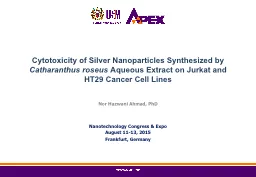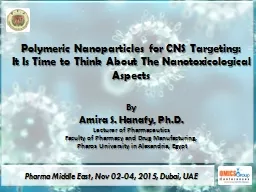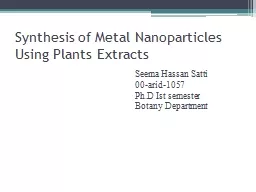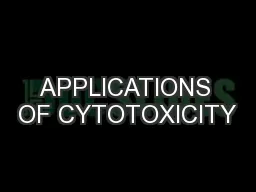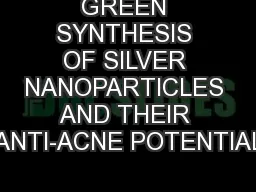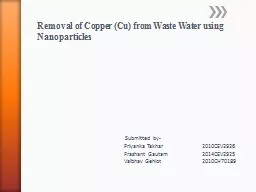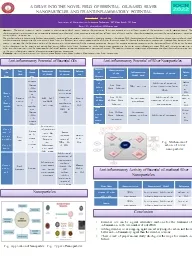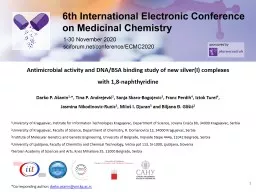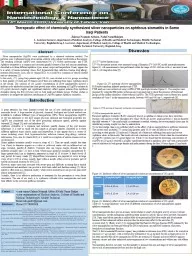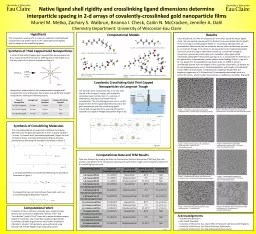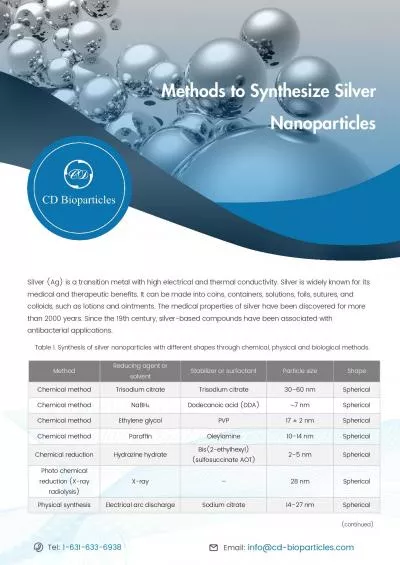PPT-Cytotoxicity of Silver Nanoparticles Synthesized by
Author : ideassi | Published Date : 2020-08-28
Catharanthus roseus Aqueous Extract on Jurkat and HT29 Cancer Cell Lines Nanotechnology Congress amp Expo August 1113 2015 Frankfurt Germany Nor
Presentation Embed Code
Download Presentation
Download Presentation The PPT/PDF document "Cytotoxicity of Silver Nanoparticles Syn..." is the property of its rightful owner. Permission is granted to download and print the materials on this website for personal, non-commercial use only, and to display it on your personal computer provided you do not modify the materials and that you retain all copyright notices contained in the materials. By downloading content from our website, you accept the terms of this agreement.
Cytotoxicity of Silver Nanoparticles Synthesized by: Transcript
Download Rules Of Document
"Cytotoxicity of Silver Nanoparticles Synthesized by"The content belongs to its owner. You may download and print it for personal use, without modification, and keep all copyright notices. By downloading, you agree to these terms.
Related Documents

